Injuries
Runner injuries are always an important point of discussion between athletes and Shin splints is an usual injury. Every athlete will have been through an injury period and it is always a tough mental time. Looking at the statistics, the majority of the injuries are between the knee and the foot. The top five injuries with runners are:
1 – Patellofemoral Pain Syndrome (PFPS) – Runner’s Knee
2 – Achilles Tendon injury
3 – Plantar Fasciitis
4 – Shin splints
5 – IT band
Another common injury is the hamstring injury.
The main causes of injuries are the increase in the training load too quickly and a previous injury. To avoid injuries, ensure you increase the load very progressively and if you get injured, get the physio to improve the situation and work on your rehabilitation up to the end of the treatment.
To lower risks of injuries, apart from the running, you should work on the drills before the speed sessions and add the following sessions: plyometric, hills reps, Strength and Conditioning.
Disclaimer concerning this article: I give general advice based on my knowledge gained during my sport massage therapy course and readings. This article is not replacing the judgement of a doctor or a physiotherapist. Ensure you visit your local doctor or therapist for a detail analysis of your injury.
What to do when you get an injury:
First, the most important is to stop your run / session. Do not run on an injury. Take a taxi, ask a drive back home or walk back. However, do not continue your run.
Secondly, when you are at home, you need to follow the PRICE treatment for the next 48 hours to 72 hours until the inflammation is gone:
– Protect the area.
– Rest: avoid walking too much, do not do any sport. If the pain is very acute, use crutches.
– Ice: This is a bony area, then you should ice only for 5 minutes at a time. Ice three to five times per day. Use a cloth to avoid the ice to be in direct contact with the skin. If you have access to the sea, a cold river, you can use the natural water to cool down your full legs. Using ice cubes in a bathtub is an alternative.
– Compress: If there is inflammation of the knee, compress the area.
– Elevate: Ensure the knee is slightly bent. An advice is to put a cushion under the mattress and not directly under to feet.

Third, get an appointment with your physio. The physio will be able to start the treatment after the inflammation.
Fourth, if the physio cannot fully treat and the injury is very serious you need to go to your doctor or specialist. If the injury is serious, go straight to the doctor or to the emergency room of your local hospital.
Reminder
The physio will be able to improve the injury during your visit, but remember that the main improvements are going to come from you. Ensure you do all the exercises given by the physio.
Do not overdo because it can be counter-productive and bring further inflammation, but ensure you do not wait until next appointment to get the physio to improve the situation.
Shin splints:
The Shin splints is the forth most common injury with athletes. The muscle at the front of the lower leg is getting inflammed. The Tibialis anterior muscle is between the outside of the knee and the big toe. It is responsible for dorsiflexing and inverting the foot.
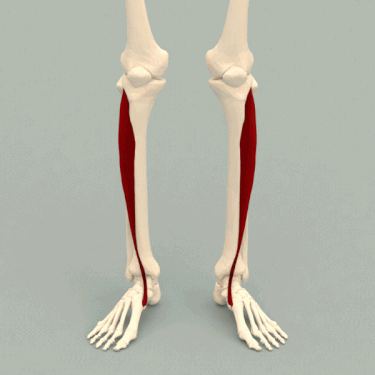
Most of the time, the pain is in the middle of the lower leg, just at the front of the tibia, and is very painful, like a stabbing pain. The pain is more common during or after exercise. You can feel the pain as well if you touch the area.
This injury may take some time to heal, because we can not rest the foot easily and the muscle contract with every stride.
Let’s see the muscle involved:
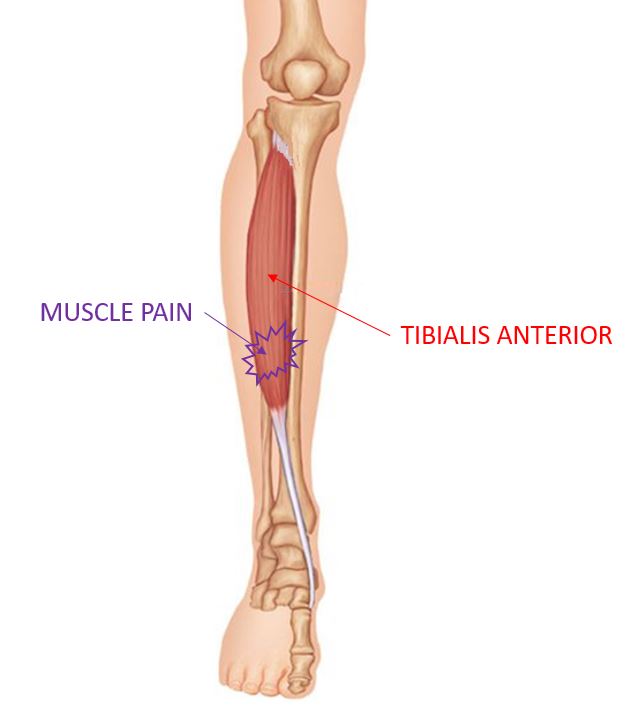
What is happening exactly: The Tibialis anterior is involve in each stride during the walk, run, jumps or climbing. They are even used when we are standing. It is common that the muscle gets irritated or inflamed. It is then an Shin splints injury for the athlete.
symptoms and cause:
The shin is getting painful during or after a run or sport activities. Generally, the pain appears during the effort, or you can feel the pain by touching the shin. The pain is at the front of the lower leg, just in front of the tibia. With a stress fracture, pain will be very important (stress fracture is not happening often).
Shin splints are caused by repetitive or intense strain on the tibialis anterior muscle. This muscle is used in each stride. Usually, the cause for this injury are:
– Overuse (increase the mileage of the intensity too fast).
– Tight calves will put tension on the tibialis anterior and the tendon linking the muscle with the foot.
– Old running shoes which are loosing their support or foot protection.
– Poor running form.
It is important to work on your form by doing drills before the speed session, Strength and Conditioning, warm-up correctly before each important session and increase the intensity or the mileage of your training progressivelly to allow the body to get stronger.
Diagnosis:
The pain is localized in front of the tibia (front of the lower leg). The pain is more important during or after exercise or by palpating the area.
If the inflammation is important, you can even see that the skin is red and you may feel heat in the area.
The doctor may ask to get a Magnetic Resonance Imaging (MRI) in order to see better the damages on the muscle.
Treatment:
First, reduce the inflammation using ice three to five times per day. After 48 to 72 hours, the inflammation should reduce.
A good way to reduce the pain is to walking, and avoid lifting the toes (dorsiflexion).
It is at this point that the physio will be able to start the treatment of the shin splints injury in a very specific way.
The first treatment will be on the muscle directly with cross fiber deep massage. It will not be a very pleasant massage with some pain. The use of needles may help to accelerate the healing.
The therapist should then work on both the calves, the achilles tendons and the quads. Both may be tight, and have scare tissues to improve. A tight or shorter calf/Achilles will mainly be the cause of the tibialis anterior to be put in tension.
The therapist can use a boot, to avoid ankle movement and accelerate the recovery.
When going back home, the therapist will give you exercises and then ensure you spend time improving the situation by doing the exercises as specified. The use of ice after the exercises may avoid further inflammation.
Massages:
It is important to massage the tibialis anterior muscle. The massage will help to increase the blood flow in the area. This muscle is narrow and limited blood flow. The increase blood flow will accelerate the recovery. It is easy to use a massage stick in this area:
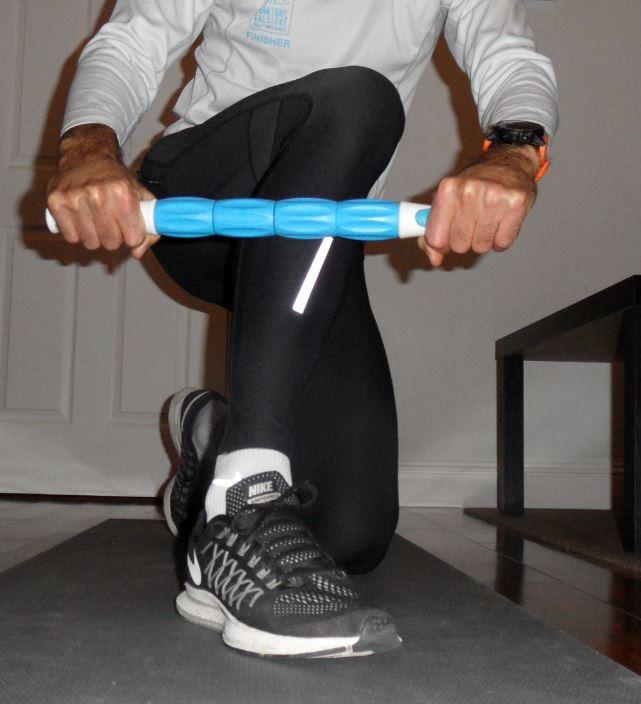
Once the pain is reduce, use a tenis ball, then a more rigid massage ball in order to put more pressure:
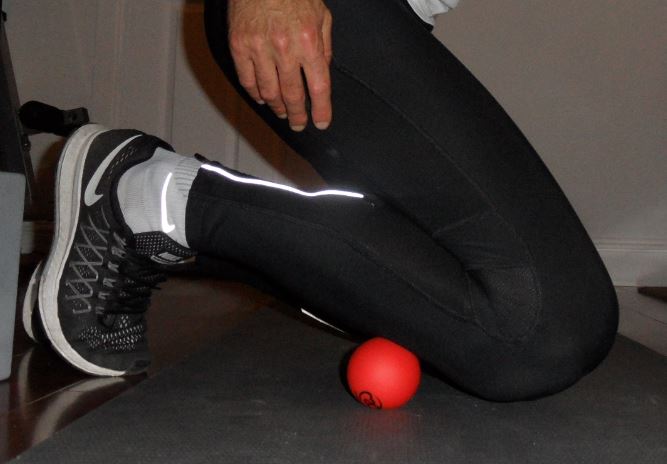
The main stretch will be on the calves and not on the tibialis anterior:
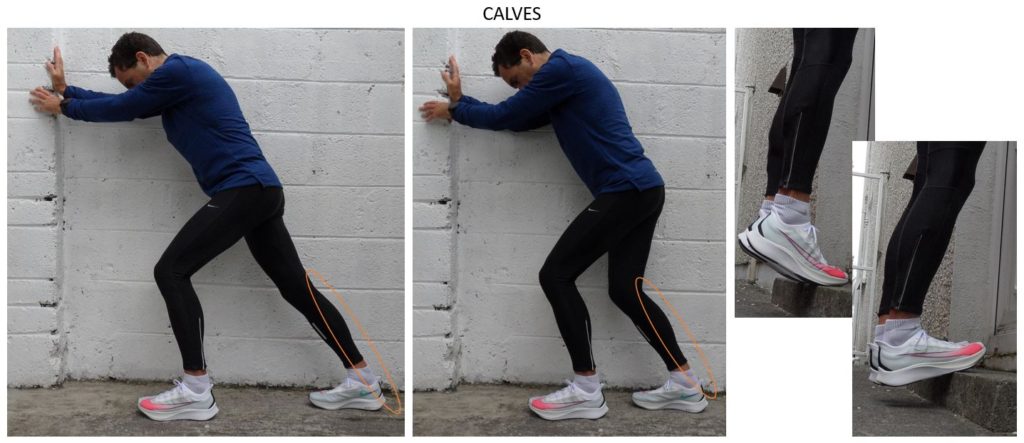
Then and use a roller on your calves and quadriceps to improve the muscle suppleness.
Other Therapies:
Other therapies may involve using shock waves, injections of corticosteroid directly in the ligament or a surgical treatment.
To lower the risk of the shin splints to happen, work on your strength and add the following to your training:
– 10 to 15 minutes of drills before each speed training session
– One session of plyometric per week
– hills repetitions (at the end of your easy days, 5 to 10 hills repetitions)
– Strength and conditioning (2 sessions per week)
– Remove your shoes and start to run on a grass field to strengthen the foot.
– Increase the training volume gradually, especially for master athletes
– Choose your shoes carefully
